Oct 24, 2022
Aurora Borealis
1. Northern lights (aurora borealis): What they are & how to see them
The northern lights are an atmospheric phenomenon that's regarded as the Holy Grail of skywatching.
The northern lights, or the aurora borealis, are beautiful dancing waves of light that have captivated people for millennia. But for all its beauty, this spectacular light show is a rather violent event.
Energized particles from the sun slam into Earth's upper atmosphere at speeds of up to 45 million mph (72 million kph), but our planet's magnetic field protects us from the onslaught.
As Earth's magnetic field redirects the particles toward the poles — there are southern lights, too, which you can read about below — the dramatic process transforms into a cinematic atmospheric phenomenon that dazzles and fascinates scientists and sky watchers alike.
2. THE HISTORY OF THE NORTHERN LIGHTS
Though it was Italian astronomer Galileo Galilei who coined the name "aurora borealis" in 1619 — after the Roman goddess of dawn, Aurora, and the Greek god of the north wind, Boreas — the earliest suspected record of the northern lights is in a 30,000-year-old cave painting in France.
Since that time, civilizations around the world have marveled at the celestial phenomenon, ascribing all sorts of origin myths to the dancing lights. One North American Inuit legend suggests that the northern lights are spirits playing ball with a walrus head, while the Vikings thought the phenomenon was light reflecting off the armor of the Valkyrie, the supernatural maidens who brought warriors into the afterlife.
The Sami of northern Scandinavia
For the indigenous Sami of northern Norway, Sweden, Finland and Russia, the lights were feared and respected. Perhaps that’s due to the regularity that they would have seen them, most nights during the long, northern winter.
Sami people believed the lights represented the souls of the dead and it was improper to discuss them. Waving at them was frowned upon too as if you caught their attention, the Sami believed the lights would reach down and carry you away
3. The fire foxes of Finland
The northern lights are referred to in Finnish as revontulet, which literally translates as fox fire. According to Finnish folklore, Arctic foxes would run so quickly that their furry tails created sparks when coming into contact with the mountains.
An interesting point about this myth is that there is some truth to it, as an Arctic fox’s fur can actually create tiny sparks of static electricity in the very dry air of northern Finland.
The northern lights in Norse mythology
It’s commonly thought that Norse mythology features many references to the aurora, but evidence is thin.
One often-quoted myth is that the lights were thought to be the ‘rainbow bridge’ that connected Midgard and Asgard—the home of the humans and the home of the gods. This could have been the lights especially when they take the form of an arch, but this reference could just have easily been a rainbow seen by day.
Other stories suggest the lights were the reflections from the amour and shields of the Valkyries—female spirit warriors that transported Odin’s chosen fallen warriors to Valhalla.
4. Northern lights myths in the Americas
Just as the Sami beliefs, many former north American beliefs about the northern lights centered on them being souls of the dead. Some Native American stories claim the lights were spirits leading away the recently departed. Other indigenous communities believed they could communicate with the dead when the lights were active.
Beliefs about the aurora varied greatly among communities. The Fox Indians of Wisconsin believed the lights were the restless spirits of their dead enemies and an omen of war to come, whereas the Menominee Indians believed they were torches used by friendly northern giants to aid fishing at night.
5. Algonquin tribes in Canada and northern Michigan believed the lights were the reflection of a fire lit by the earth’s creator, Nanahbozho, intended to demonstrate that the creator was still thinking of them despite being far away.
Inuit communities of Alaska were among those to fear the lights. They even carried knives to protect themselves.
Legends from elsewhere in the world
Some believe the northern lights are responsible for a surprising number of other myths and legends around the world. For example, the early dragon legends of China and parts of Europe could well have been sparked by a rare ‘once in a lifetime’ sighting of the aurora.
6. Anglo-Saxon chronicles document dragon sightings above northern England that were seen as an omen of war. Some explain the sightings as comets or meteorites but recent climate research suggests an alternate explanation.
“It is possible that what was reported in the Anglo-Saxon chronicles were the writhing forms of the northern lights, which some historians believe to be the origin of all European dragon myths,” said Jim Snee at Heritage Lincolnshire.
7. Early astronomers also mentioned the northern lights in their records. A royal astronomer under Babylon's King Nebuchadnezzar II inscribed his report of the phenomenon on a tablet dated to 567 B.C., for example, while a Chinese report from 193 B.C. also notes the aurora, according to NASA.
The science behind the northern lights wasn't theorized until the turn of the 20th century. Norwegian scientist Kristian Birkeland proposed that electrons emitted from sunspots produced the atmospheric lights after being guided toward the poles by Earth's magnetic field. The theory would eventually prove correct, but not until long after Birkeland's 1917 death.
8. WHAT ARE THE NORTHERN LIGHTS?
At any given moment, the sun is ejecting charged particles from its corona, or upper atmosphere, creating what's called the solar wind. When that wind slams into Earth's ionosphere, or upper atmosphere, the aurora is born. In the Northern Hemisphere, the phenomenon is called the northern lights (aurora borealis), while in the Southern Hemisphere, it's called the southern lights (aurora australis).
These particles are deflected towards the poles of Earth by our planet's magnetic field and interact with our atmosphere, depositing energy and causing the atmosphere to fluoresce,
9. The bright colors of the northern lights are dictated by the chemical composition of Earth's atmosphere.
Every type of atom or molecule, whether it's atomic hydrogen or a molecule like carbon dioxide, absorbs and radiates its own unique set of colors, which is analogous to how every human being has a unique set of fingerprints. Some of the dominant colors seen in aurorae are red, a hue produced by the nitrogen molecules, and green, which is produced by oxygen molecules.
10. While solar wind is constant, the sun's emissions go through a roughly 11-year cycle of activity. Sometimes there's a lull, but other times, there are vast storms that bombard Earth with extreme amounts of energy. This is when the northern lights are at their brightest and most frequent. The last solar maximum, or period of peak activity, occurred in 2014.
11. Despite plenty of advances in heliophysics and atmospheric science, much about the northern lights remains a mystery. For example, researchers weren't entirely sure how the energized particles in the solar wind get accelerated to their extraordinary speeds (45 million mph) until June 2021, when a study published in the journal Nature Communications confirmed that a phenomenon called Alfvén waves gave the particles a boost. Alfvén waves are low-frequency yet powerful undulations that occur in plasma due to electromagnetic forces; the electrons that create the northern lights "surf" along these waves in Earth's atmosphere, accelerating rapidly.
12. NASA is also on the hunt for clues about how the northern lights work. In 2018, the space agency launched the Parker Solar Probe, which is currently orbiting the sun and will eventually get close enough to "touch" the corona. While there, the spacecraft will collect information that could reveal more about the northern lights.
The auroras are best seen during the winter, when nights are long.
13. NORTHERN LIGHTS, SOUTHERN LIGHTS
On Earth, the northern lights' counterpart in the Southern Hemisphere is the southern lights — they are physically the same and differ only in their location. As such, scientists expect them to occur simultaneously during a solar storm, but sometimes the onset of one lags behind the other.
"One of the more challenging aspects of nightside aurorae involves the comparison of the aurora borealis with the aurora australis," said Steven Petrinec, a physicist at the aerospace company Lockheed Martin who specializes in magnetospheric and heliospheric physics.
14. "While some auroral emissions occur in both hemispheres at the same magnetic local time, other emissions appear in opposing sectors in the two hemispheres at different times — for example, pre-midnight in the Northern Hemisphere and post-midnight in the Southern Hemisphere," Petrinec told Space.com.
15. The hemispheric asymmetry of the aurora is due in part to the sun's magnetic field interfering with Earth's magnetic field, but research into the phenomenon is ongoing.
Another aurora-like occurrence on Earth is STEVE ("Strong Thermal Emission Velocity Enhancement"). Like the northern and southern lights, STEVE is a glowing atmospheric phenomenon, but it looks slightly different from its undulating auroral counterparts. "These emissions appear as a narrow and distinct arc, are typically purple in color and often include a green picket-fence structure that slowly moves westward," Petrinec said.
16. STEVE is also visible from lower latitudes, closer to the equator, than the auroras.
A 2019 study published in the journal Geophysical Research Letters(opens in new tab) discovered that STEVE is the result of two mechanisms: The mauve streaks are caused by the heating of charged particles in the upper atmosphere, while the picket-fence structure results from electrons falling into the atmosphere. The latter process is the same driver of the aurora, making STEVE a special kind of aurora hybrid.
17. AURORAS ON OTHER WORLDS
Auroras occur on other planets, too — all that's required to make an aurora is an atmosphere and a magnetic field.
Auroras have been seen in the atmospheres of all the gas giant planets, which is not surprising, since these planets all have robust magnetic fields. More surprisingly, auroras have also been discovered on both Venus and Mars, both of which have very weak magnetic fields.
18. Indeed, scientists have catalogued three different types of Martian auroras. One occurs only on the planet's dayside, another is a widespread nighttime feature fueled by strong solar storms and another is a much patchier nightside phenomenon.
The Hope Mars orbiter, the United Arab Emirates' first-ever interplanetary mission, managed to capture the discrete nocturnal aurora shortly after arriving at the Red Planet in early 2021. The probe's observations could help scientists better understand this mysterious phenomenon.
19. Jupiter's magnetic field is 20,000 times stronger than that of Earth, so the giant planet's auroras are far brighter than the ones that blaze in our skies. And the Jupiter lights aren't just driven by the solar wind: Most of the particles that cause the planet's auroras are blasted into space by its close-orbiting moon Io, the most volcanic body in the solar system.
20. Astronomers have even caught glimpses of apparent auroral activity in other solar systems. For example, two October 2021 studies reported the detection of radio waves emitted by multiple red dwarfs, stars smaller and dimmer than our own sun.
These radio waves are likely associated with a sort of "backward" aurora, one that flares up near stars and is driven by particles released by close-orbiting planets, researchers said.
"Our model for this radio emission from our stars is a scaled-up version of Jupiter and Io, with a planet enveloped in the magnetic field of a star, feeding material into vast currents that similarly power bright aurorae," Joseph Callingham, a radio astronomer at Leiden University in the Netherlands and the Dutch national observatory ASTRON and co-author on both new studies, said in a statement(opens in new tab). "It's a spectacle that has attracted our attention from light-years away."
21. These feeder planets remain hypothetical at the moment; nobody has yet discovered any circling the red dwarfs that the team studied. But if Callingham and his colleagues are right, astronomers may have a powerful new planet-hunting technique at their disposal.
Auroras are expected to be relatively common in the skies of exoplanets as well. But we'll have to get better looks at these faraway worlds to see their light shows directly.
22. The northern lights are happening 24 hours a day, seven days a week, 365 days a year. But that doesn't mean they're easy to spot; you need to be at the right place at the right time.
The best place to see the northern lights is any destination in the "auroral zone," the area within an approximately 1,550-mile (2,500 kilometers) radius of the North Pole. That's where the aurora most frequently occurs, though the phenomenon can creep farther south during particularly strong solar storms.
23. In March 1989, for example, a powerful solar eruption made the northern lights visible, albeit briefly, to people as far south as Honduras. (There were some negative consequences as well, however: The geomagnetic storm that supercharged the aurora also temporarily knocked out electricity across the entire Canadian province of Quebec.)
Within the auroral zone, it's best to be as far away from city lights as possible to maximize visibility.
The best time of year to see the northern lights is between September and April, when the sky gets dark enough to see the aurora. (Far northern locales experience the midnight sun, or 24 hours of daylight in the summer.) The most action usually happens between 9 p.m. and 3 a.m.
Keep the moon phases in mind, as a bright full moon might fill the night sky with light. Check local weather forecasts as well, because you won't be able to spot the aurora through the clouds.
Aurora Borealis Pictures
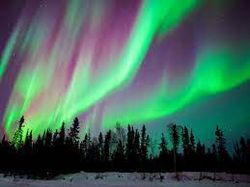

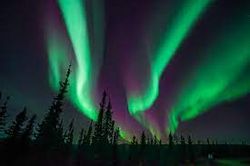
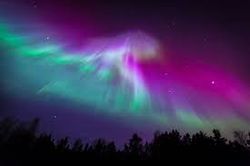
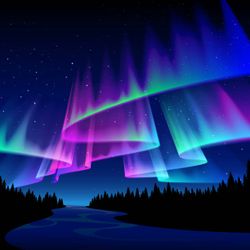



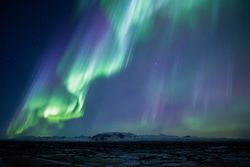

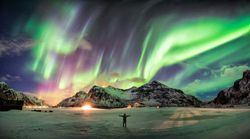
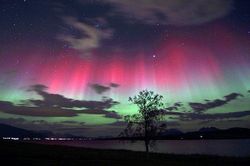
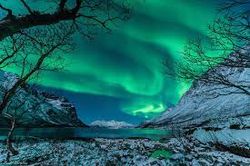
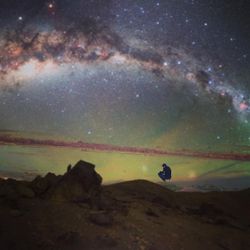
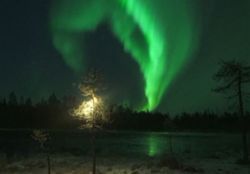
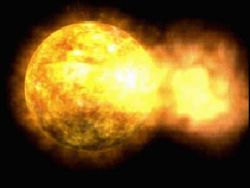
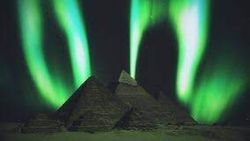
By undefined
19 notes ・ 79 views
English
Elementary